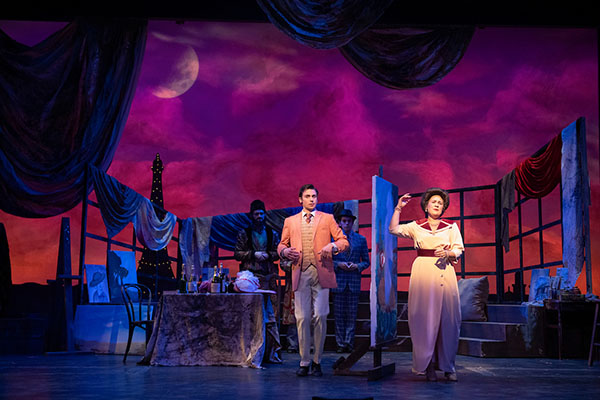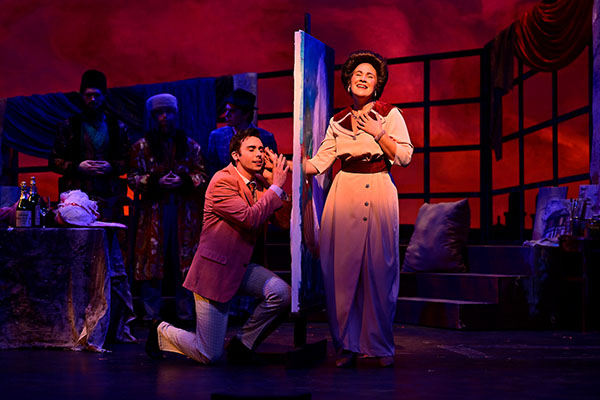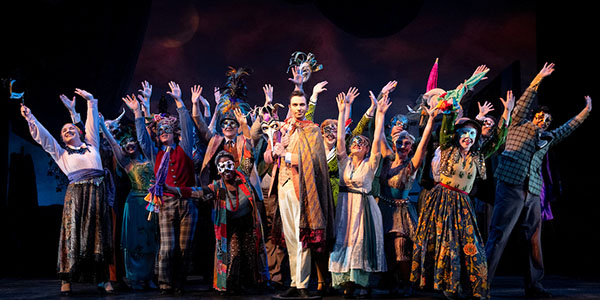by Kevin McLaughlin

The 1909–10 season was good for Lehár: the composer had three operettas playing in different Viennese theaters that year, the most successful of which, Der Graf von Luxemburg (“The Count of Luxembourg”), had an initial run of 226 performances in the Austrian capital and over 300 in London.
The story, though fluffy, is romantic and appropriate to the genre. In exchange for a small fortune, René, the impoverished Count of Luxembourg (sung by tenor Jack Murphy), is persuaded by Russian prince Basil Basilovitch (Jacob Allen) to enter into a temporary marriage to “Paulette,” a bride he will never see. Paulette is in fact the opera singer Angèle (Christine Price).

By chance, the Count and Angèle meet and fall in love, only to discover that they are both married — unbeknownst to them, to each other! By now the Count has already spent the prince’s money and has given his word to divorce “Paulette”/Angèle. Things look grim for the lovers until the Countess Kokozova (Maggie Langhorne) shows up and reveals (of course) her long-standing engagement to the prince, which she forces him to honor, leaving the Count and Angèle free to remain married. Oh, yes, and the Count has by now re-acquired his family fortune and is now able to return the prince’s money.

As Angèle, Christine Price treated the audience to silvery tones of soprano suppleness. Price made the role seem ideally suited to her, with easy top notes and a velvety middle range. She also held the stage well, convincing us of her complicated romantic life and eventual good luck. Maggie Langhorne nearly stole the final act as the suffer-no-fools Countess Kokozov. She projected the right mix of opportunism and experience to make the dial of fate turn to her liking just in the nick of time.

Jacob Allen was a comedic standout, full of wheedling charm as Prince Basil Basilovitch while providing the character’s alleged resistance. The trio of comic bureaucrats (“The Three” — Zachary Elmassian, Colin Ring, and R. Porter Hiatt) also showed off nice voices and good comedic timing.
Under the skilled baton of Wilson Southerland, the orchestra instilled infectious energy into Lehár’s score. The chorus sang strong and clear as party revelers. The dresses and menswear in the Mardi Gras and party scenes were wonderful. Spencer Reese’s choreography contributed to an enchanting evening.
Published on ClevelandClassical.com July 16, 2024.
Click here for a printable copy of this article



